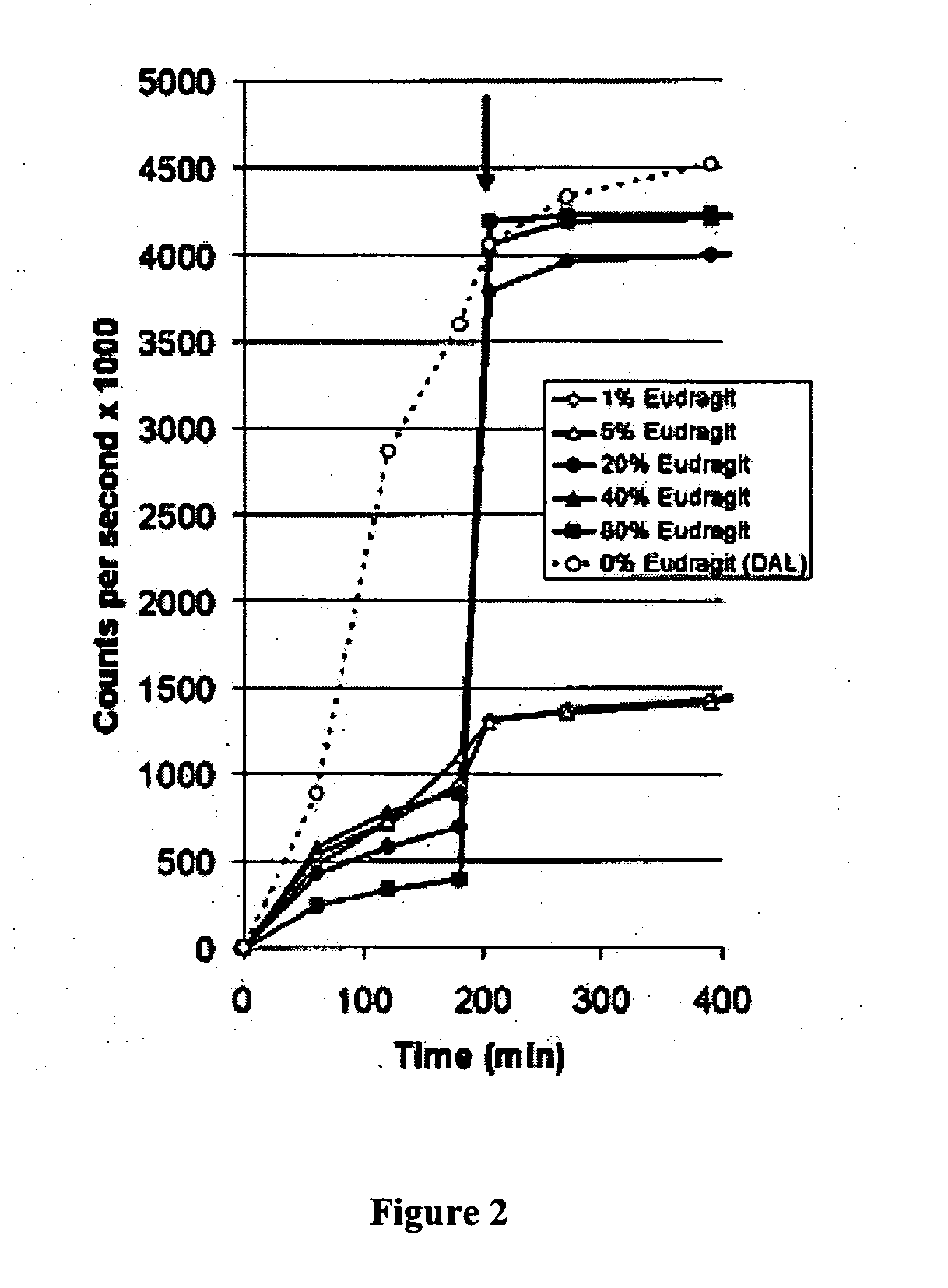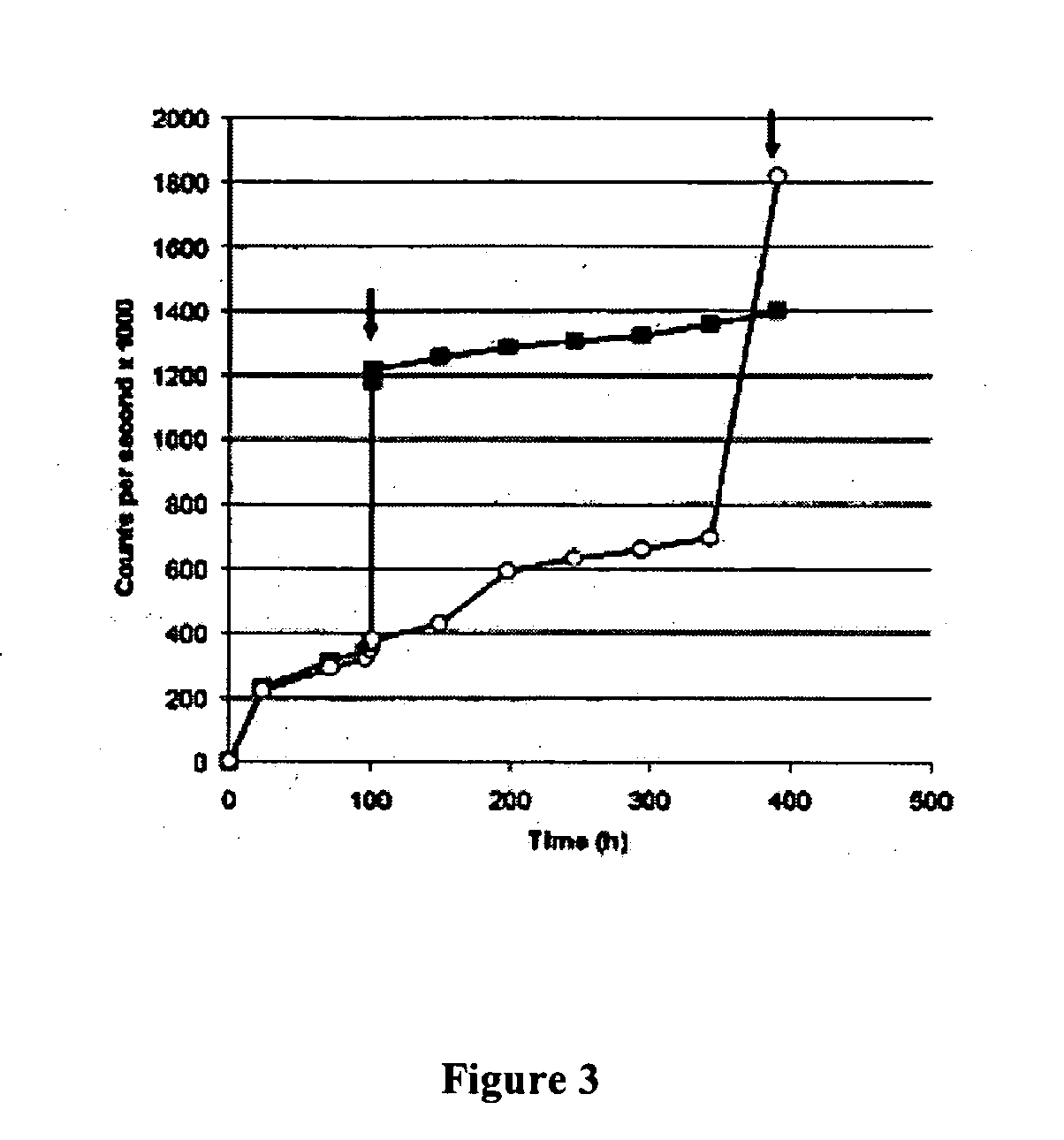pH-triggered microparticles
a technology of triggered microparticles and microparticles, which is applied in the field of triggered microparticles, can solve the problems of slow degradation, suboptimal intracellular, and failure of vaccines containing recombinant proteins or peptides to induce clinically effective cell-mediated immunity, and achieve the effects of reducing particle agglomeration, promoting absorption of therapeutic or diagnostic agents, and increasing bioavailability of agents
- Summary
- Abstract
- Description
- Claims
- Application Information
AI Technical Summary
Benefits of technology
Problems solved by technology
Method used
Image
Examples
example 1
pH-Triggered Microparticles Enhance Peptide Antigen Delivery to Dendritic Cells: Implications for Tumor Vaccines
[0087] Despite the presence of tumor-specific T cells in many cancer patients, most tumor vaccines fail to boost tumor immunity to clinically meaningful levels. One obstacle to effective vaccination is inadequate antigen delivery to professional antigen presenting cells (APC). We therefore sought to design an antigen-delivery vehicle which would be taken up readily by APC; release vaccine antigens in acidic phago-lysosomal compartments; and protect antigens from extra-cellular degradation. Using a spray-drying method we produced 3-5 μm microparticles (MP) composed of: (1) a protein of interest; (2) the phospholipid dipalmitoylphosphatidylcholine; and (3) the polymethacrylate Eudragit, which is insoluble in water at physiological pH, but very soluble at acidic pH. A wide range of proteins and peptides were successfully encapsulated in MP. Kinetic studies showed that releas...
example 2
pH-Triggered Release of Macromolecules from Spray-Dried Polymethacrylate Microparticles
Introduction
[0088] Microparticulate formulations for controlled release of therapeutic agents have been used to achieve both systemic and local drug delivery. However, there are a number of biomedical applications where the desired goal is enhanced delivery into an intracellular compartment. Examples include vaccination, transfection, and the treatment of infections that are located within macrophages (J. Hanes, J. L. Cleland, and R. Langer. New advances in microsphere-based single-dose vaccines. Adv Drug Deliv Rev 28: 97-119 (1997); M. L. Hedley, J. Curley, and R. Urban. Microspheres containing plasmid-encoded antigens elicit cytotoxic T-cell responses. Nat Med 4: 365-8 (1998); A. K. Agrawal, and C. M. Gupta. Tuftsin-bearing liposomes in treatment of macrophage-based infections. Adv Drug Deliv Rev 41: 135-46 (2000); incorporated herein by reference). The encapsulation of drugs in microparticle...
example 3
pH-Triggered Microparticles for Peptide Vaccination
Introduction
[0120] Optimizing the CTL response to vaccines is essential to improve the immunotherapy of cancer, and viral diseases (Raychaudhuri, S., and K. L. Rock. 1998. Fully mobilizing host defense: building better vaccines. Nat. Biotechnol. 16:1025; incorporated herein by reference). CD8+ T cells will only respond to vaccine antigens in vivo if the epitopes contained in the vaccine are presented in the context of MHC I by specialized antigen presenting cells (APCs), such as dendritic cells (DCs). The amount of antigen presented at the time of initial encounter between T cell and the APC is a critical factor that dictates the strength of T cell stimulation. Increasing the epitope density decreases the threshold for activation of naive T cells and increases the size of the primary T cell response (Gett, A. V., F. Sallusto, A. Lanzavecchia, and J. Geginat. 2003. T cell fitness determined by signal strength. Nat. Immunol. 4:355;...
PUM
| Property | Measurement | Unit |
|---|---|---|
| density | aaaaa | aaaaa |
| density | aaaaa | aaaaa |
| diameter | aaaaa | aaaaa |
Abstract
Description
Claims
Application Information
 Login to View More
Login to View More - R&D
- Intellectual Property
- Life Sciences
- Materials
- Tech Scout
- Unparalleled Data Quality
- Higher Quality Content
- 60% Fewer Hallucinations
Browse by: Latest US Patents, China's latest patents, Technical Efficacy Thesaurus, Application Domain, Technology Topic, Popular Technical Reports.
© 2025 PatSnap. All rights reserved.Legal|Privacy policy|Modern Slavery Act Transparency Statement|Sitemap|About US| Contact US: help@patsnap.com



